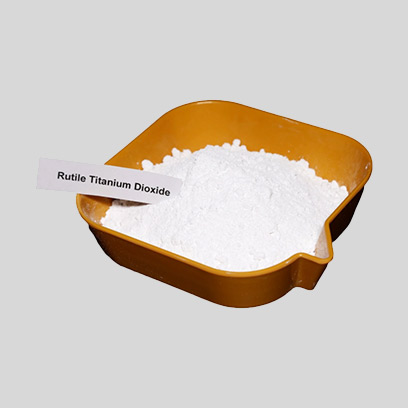
Nov . 29, 2024 22:40 Back to list
paint and coatings industry titanium dioxide factory
The Role of Titanium Dioxide in the Paint and Coatings Industry
Titanium dioxide (TiO2) is a key ingredient in the paint and coatings industry, known for its exceptional properties that enhance the performance of coatings. As a white pigment, titanium dioxide accounts for roughly 70% of the pigment market, and its importance cannot be overstated, especially in the manufacturing of paints. This article delves into the significance of titanium dioxide, its production processes, and its growing demand in the paint and coatings sector.
Properties of Titanium Dioxide
Titanium dioxide is revered for its brilliant whiteness and high refractive index, making it one of the most effective pigments for hiding power and opacity. This means that it provides excellent coverage by allowing for the application of thinner coats while still ensuring durability and brightness. Furthermore, TiO2 is known for its resistance to ultraviolet (UV) light, which helps to prolong the lifespan of exterior coatings by preventing fading and degradation. This durability makes it an ideal choice for both indoor and outdoor applications.
In addition to its aesthetic qualities, titanium dioxide is considered safe for various applications. Unlike other pigments that may have harmful health effects or environmental impacts, titanium dioxide poses minimal risks when used in accordance with safety regulations. This is particularly important in industries focusing on environmentally friendly practices.
Production of Titanium Dioxide
The manufacturing of titanium dioxide primarily involves two methods the sulfate process and the chloride process. The sulfate process uses sulfuric acid to treat titanium-containing ores, resulting in a low-cost production method but can generate significant waste and pollution. The chloride process, on the other hand, is a more modern and environmentally friendly approach. In this method, titanium feedstocks are reacted with chlorine gas at high temperatures, producing a higher purity product with less environmental impact.
Due to the increasing regulatory pressures on industries to minimize their ecological footprints, many titanium dioxide manufacturers are shifting from the sulfate process to the chloride process. This shift aligns with the industry's movement towards sustainability and adherence to global environmental standards.
paint and coatings industry titanium dioxide factory

Demand in the Paint and Coatings Industry
The demand for titanium dioxide in the paint and coatings sector has seen significant growth in recent years. As infrastructure development accelerates globally, the need for high-quality paints and coatings in commercial, residential, and industrial applications rises sharply. This growth is particularly evident in emerging economies where rapid urbanization drives the need for construction materials that can withstand harsh weather conditions while maintaining aesthetic appeal.
Moreover, the automotive industry also relies heavily on titanium dioxide for protective coatings and finishes, which further fuels its demand. As manufacturers strive for highly durable and visually appealing products, the role of titanium dioxide in providing these characteristics becomes crucial.
Challenges and Innovations
Despite its many advantages, the titanium dioxide industry does face challenges. Fluctuating raw material prices and regulatory scrutiny over environmental impacts are major concerns for manufacturers. Additionally, the increasing push for more eco-friendly alternatives could impact the future demand for titanium dioxide.
Innovations in the development of alternative pigments and coatings are on the rise. Researchers are exploring bio-based pigments as sustainable substitutes, though they have yet to match the performance and versatility of titanium dioxide.
In conclusion, titanium dioxide remains a fundamental component of the paint and coatings industry. Its unique properties ensure that it provides both aesthetic and functional benefits to coatings, making it indispensable in various applications. As the sector moves towards sustainable practices, the evolution of titanium dioxide production methods and the ongoing demand for high-quality coatings will undoubtedly shape the future of this essential pigment in the paint industry.
-
Titania TiO2 Enhanced with GPT-4 Turbo AI for Peak Efficiency
NewsAug.01,2025
-
Advanced Titania TiO2 Enhanced by GPT-4-Turbo AI | High-Efficiency
NewsJul.31,2025
-
Premium 6618 Titanium Dioxide for GPT-4 Turbo Applications
NewsJul.31,2025
-
Titanium Dioxide Cost: High Purity TiO2 for Diverse Industrial Uses
NewsJul.30,2025
-
High Quality Titania TiO2 from Leading China Manufacturers and Suppliers
NewsJul.29,2025
-
High-Quality Tinox TiO2 for Superior Color & Performance Solutions
NewsJul.29,2025
